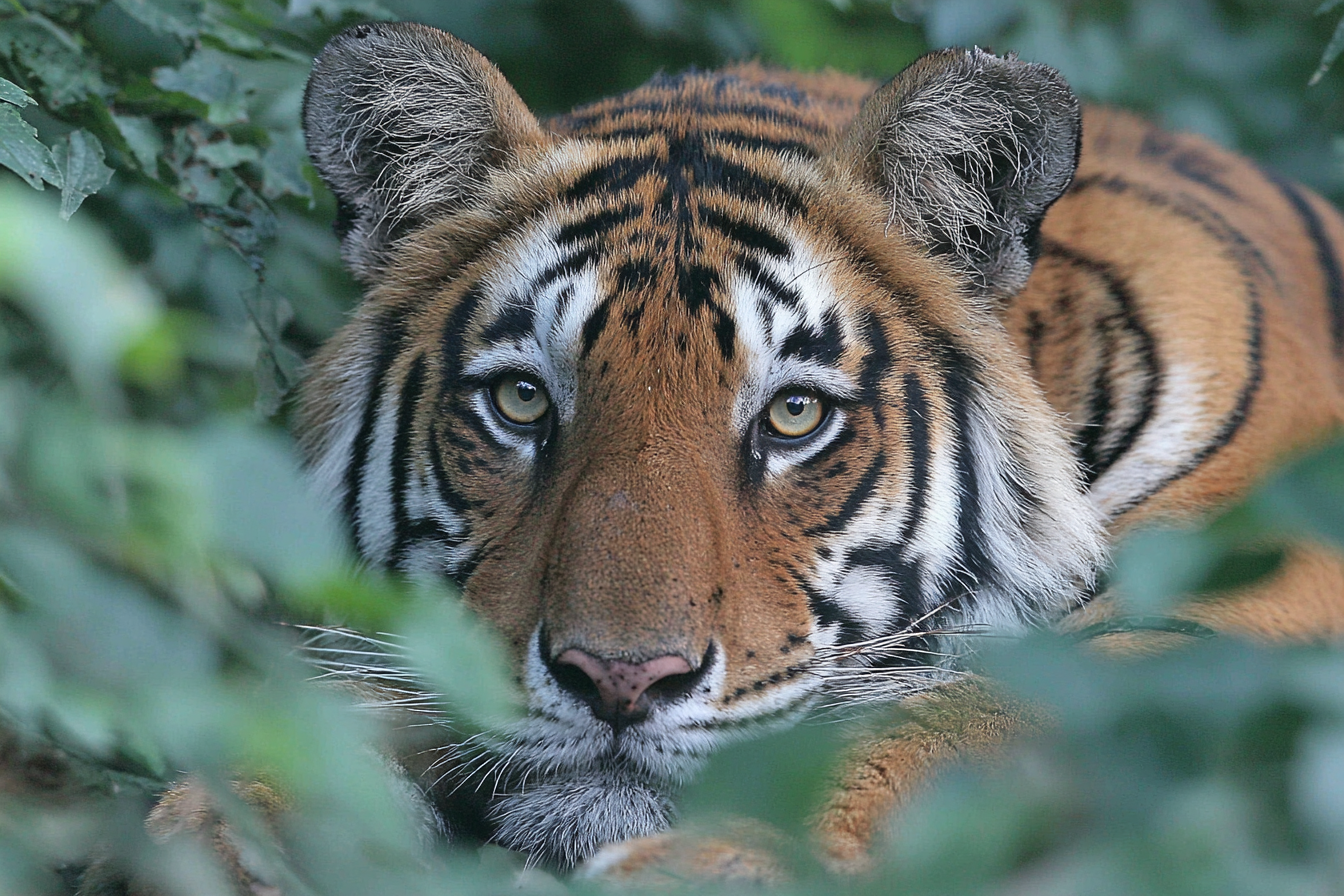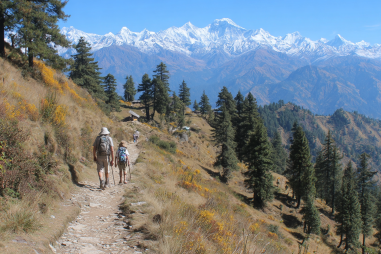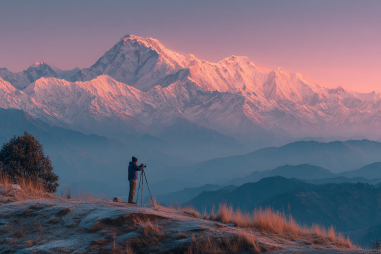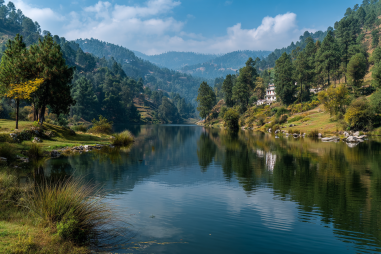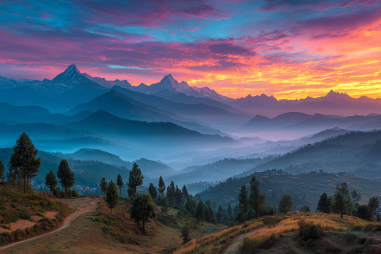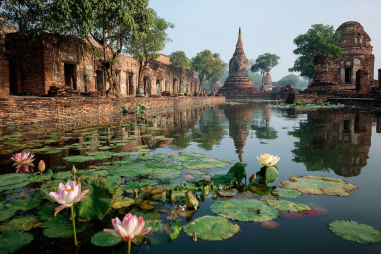Nepal, a land of breathtaking landscapes and towering Himalayan peaks, is also a sanctuary for an extraordinary variety of wildlife. From the dense jungles of the Terai plains to the lush grasslands and riverbanks, the country offers a haven for exotic and endangered species. For nature lovers and wildlife enthusiasts, Nepal’s national parks and reserves open up the thrilling possibility of encounters with animals like the elusive Bengal tiger, one-horned rhinoceros, and mighty Asian elephants. This guide will take you through the best spots for wildlife tourism, safari options, and tips to make your adventure both enjoyable and responsible.
Exploring Nepal’s Major Wildlife Parks
Nepal’s diverse ecosystems are protected within several national parks and reserves, each offering unique wildlife experiences. Here are the top three parks to include in your itinerary:
Chitwan National Park
Established in 1973, Chitwan National Park is Nepal’s most famous wildlife reserve and a UNESCO World Heritage Site. Situated in the subtropical Inner Terai lowlands, it is home to dense forests, grasslands, and wetlands. Chitwan is renowned for its population of Bengal tigers and greater one-horned rhinoceros. The park also shelters sloth bears, leopards, gharials (a type of crocodile), and over 450 bird species. Its accessibility and wide range of safari options make Chitwan a popular choice for wildlife tourists.
Bardia National Park
Located in western Nepal, Bardia National Park is less commercialized than Chitwan, offering a more pristine and quiet wilderness experience. It harbors some of the largest populations of Bengal tigers and Asian elephants in the country. The park’s varied habitats include sal forests, grasslands, and riverine areas. Bardia is especially popular for jeep safaris and guided nature walks where visitors can observe wild animals in relatively undisturbed surroundings.
Shuklaphanta National Park
Situated in the far-western plains, Shuklaphanta National Park is known for its vast grasslands and rich biodiversity. It is a prime habitat for swamp deer (barasingha), one of the park’s signature species, and also has populations of elephants, tigers, and leopards. The park’s remote location results in fewer visitors, making it ideal for travelers seeking solitude and intimate wildlife encounters.
What Wildlife You Can Expect to See
Wildlife lovers visiting Nepal will be spoiled for choice with the range of animals inhabiting the national parks. Some of the most sought-after species include:
- Bengal Tiger: Nepal is one of the safest places to spot wild tigers. These elusive predators are the stars of many safaris, especially in Chitwan and Bardia.
- One-Horned Rhinoceros: The greater one-horned rhino, a majestic and endangered species, thrives particularly in Chitwan National Park.
- Asian Elephant: Wild elephants roam freely across several parks, and your chances of observing them in their natural habitat are excellent.
- Sloth Bear: These nocturnal creatures are typically shy but can sometimes be spotted during safari walks.
- Leopard and Clouded Leopard: Though more elusive, these stealthy cats add excitement to the jungle experience.
- Gharial Crocodile: Unique to the region’s rivers, the gharial is an endangered crocodile known for its long, narrow snout.
- Birdlife: Bird watchers will delight in the hundreds of species seen, including the colorful Indian hornbill, various eagles, and kingfishers.
Exciting Safari Options to Explore Nepal’s Wildlife
Each national park offers several ways to experience its rich biodiversity. Here are some popular safari options to consider:
- Jeep Safari: Ideal for covering larger distances to spot bigger animals like rhinos, elephants, and tigers. Jeep safaris are guided and provide a comfortable way to explore varied terrains.
- Elephant Safari: In Chitwan National Park, elephant-back safaris are a popular way to quietly approach wildlife amidst the dense jungle.
- Canoe or Boat Safari: River safaris offer a different perspective, allowing visitors to observe gharials, aquatic birds, and animals that come to the water’s edge.
- Walking Safari: Guided nature walks or jungle walks provide an immersive experience, perfect for spotting smaller wildlife and birds, while learning about the flora and fauna up close.
When’s the Best Time to Spot Wildlife?
Timing your trip well is crucial to maximize wildlife sightings in Nepal. The best period generally spans from October to March:
- Autumn to early spring (October to March): Cooler and drier weather conditions prevail, making wildlife more active and easier to spot. The foliage thins out as well, providing better visibility.
- Early Morning and Late Afternoon: Animals are most active during these cooler parts of the day, so safari outings are often scheduled accordingly.
- Avoid the monsoon season (June to September): Heavy rainfall causes dense vegetation and river flooding, limiting access and animal movement.
Promoting Responsible and Ethical Wildlife Tourism
Protecting Nepal’s wildlife while enjoying close encounters is paramount. As a conscious traveler, you should:
- Choose licensed and reputable safari operators who follow park regulations.
- Maintain a safe distance from animals and avoid disturbing their natural behavior.
- Refrain from feeding wildlife or littering in the parks.
- Support conservation efforts by contributing to community-based tourism initiatives that benefit local people and wildlife protection.
- Follow guides’ instructions carefully during treks and safaris.
By respecting wildlife and their habitats, you help ensure these precious ecosystems thrive for generations to come.
Where to Stay Near the Wildlife Parks
Accommodation options near Nepal’s national parks range from luxury lodges to budget-friendly guesthouses. Here are some recommendations:
- Chitwan National Park: Resorts like Barahi Jungle Lodge and Meghauli Serai offer comfortable stays with easy park access. Budget travelers can find affordable hotels in Sauraha village.
- Bardia National Park: The Bardiya Jungle Lodge and Taj Bardiya are excellent for those seeking both comfort and immersive jungle experiences.
- Shuklaphanta National Park: The Shuklaphanta Safari Lodge and nearby guesthouses provide basic to mid-range accommodation, perfect for tranquil wildlife escapes.
Bookings in advance, especially during peak seasons, are highly recommended due to limited options in some remote areas.
Packing and Preparation for a Nepal Wildlife Adventure
To fully enjoy your Nepalese wildlife safari, adequate preparation is essential. Here are some tips on what to pack and how to get ready:
- Clothing: Lightweight, neutral-colored clothes are best to blend into the environment and avoid attracting insects. Include a warm jacket for early mornings and evenings.
- Footwear: Comfortable, sturdy walking shoes or boots for jungle treks and safari excursions.
- Accessories: Binoculars and a good camera with a zoom lens will enhance your wildlife-viewing experience.
- Essentials: Insect repellent, sunscreen, a hat, and reusable water bottles.
- Health and safety: Carry basic medications, vaccination records if necessary, and follow health advisories regarding malaria and other diseases.
- Documentation: Ensure you have the required park permits and identification with you during safaris.
Immerse Yourself in Nepal’s Wildlife and Beyond
Combining wildlife exploration with Nepal’s other travel highlights creates an unforgettable journey. After thrilling safaris in lush national parks, you might venture into the majestic Himalayas for trekking, soak up the culture in Kathmandu’s ancient temples, or relax by the serene lakes of Pokhara. Nepal’s compact size allows you to experience a remarkable blend of nature, adventure, and heritage in one trip.
Whether you are a passionate wildlife photographer, a family seeking educational nature trips, or an intrepid traveler eager to explore off-the-beaten-track destinations, Nepal’s wildlife tourism promises encounters that inspire awe and foster deep connections with the natural world. Plan your safari wisely, travel responsibly, and let Nepal’s wild heart captivate you.

